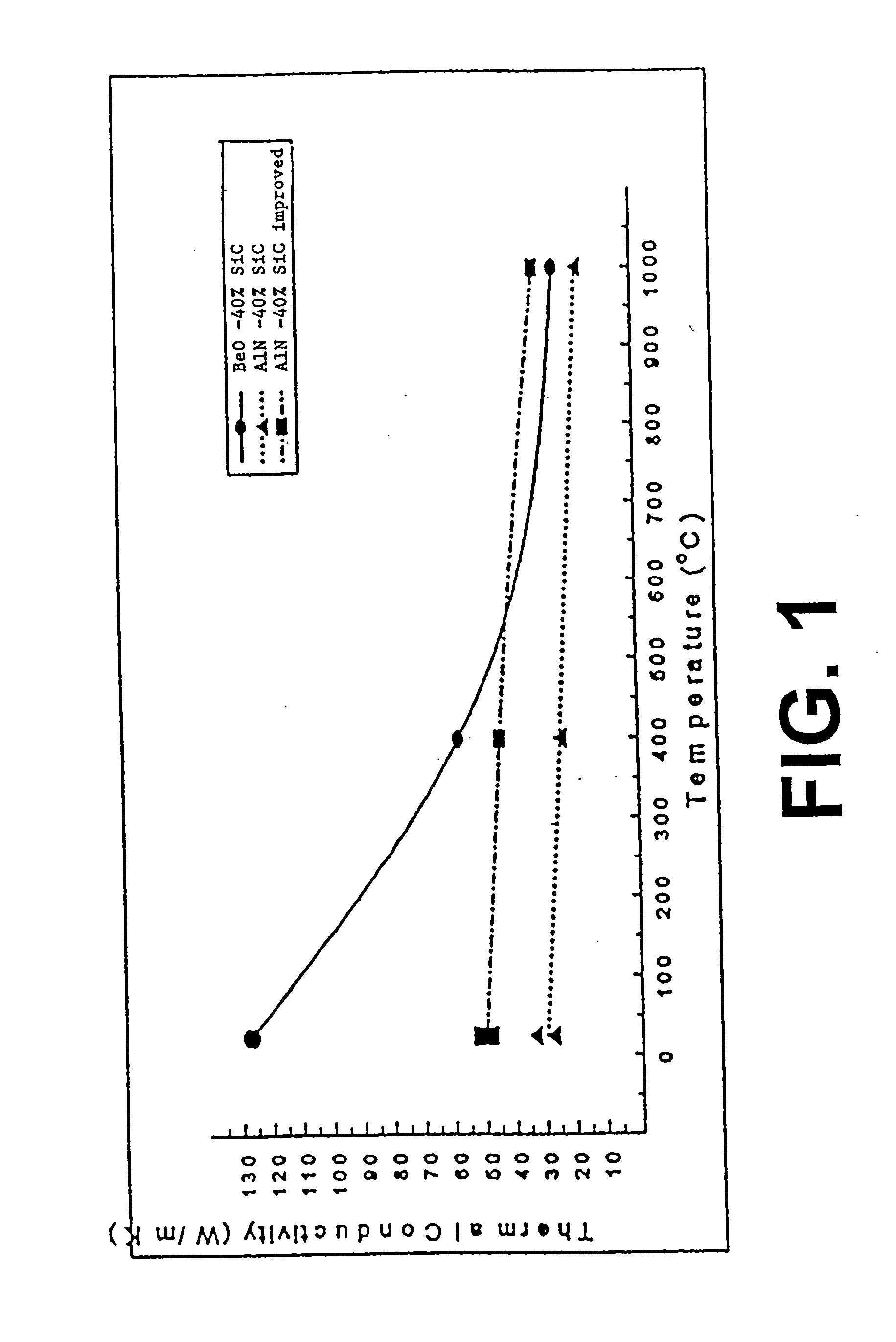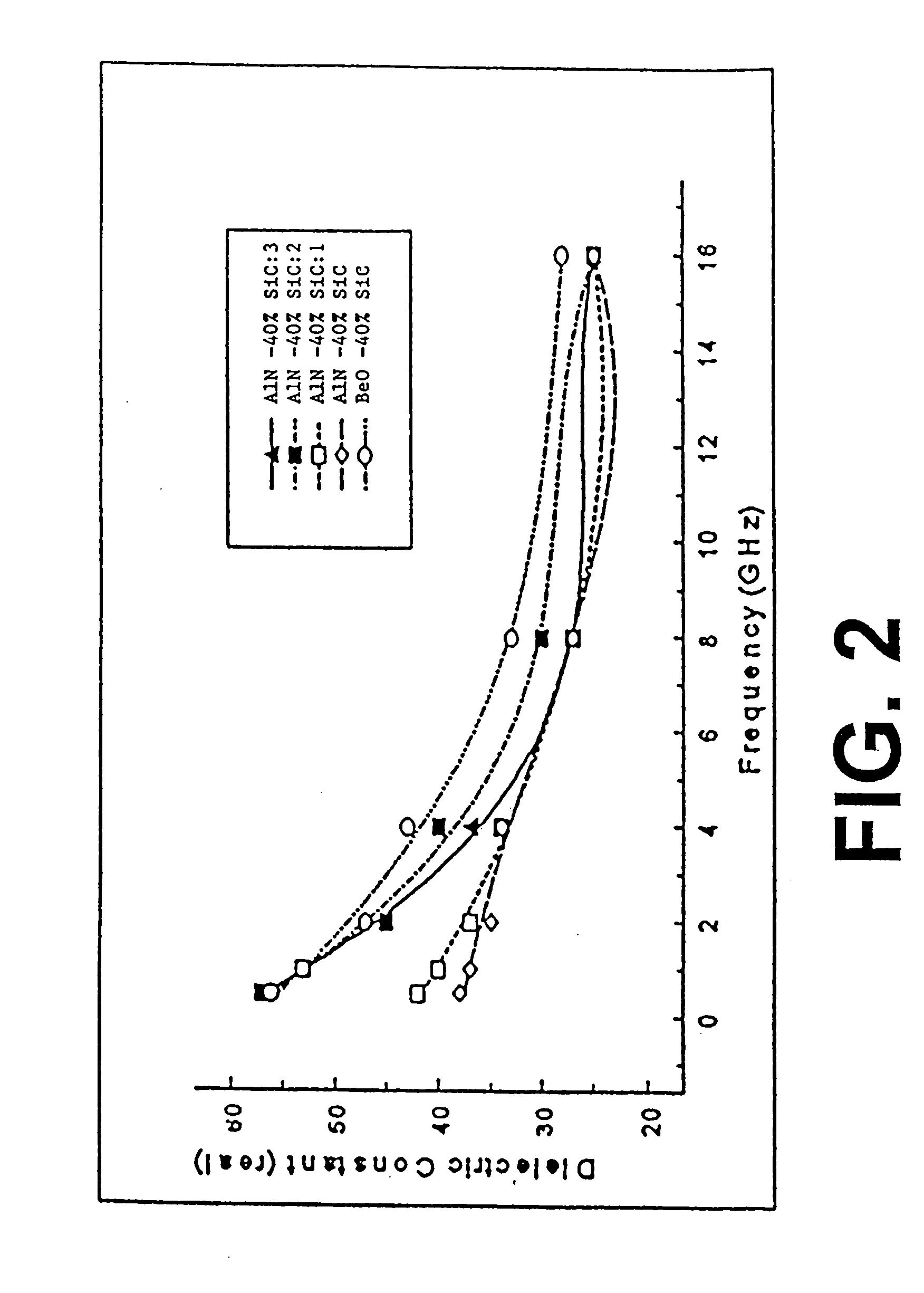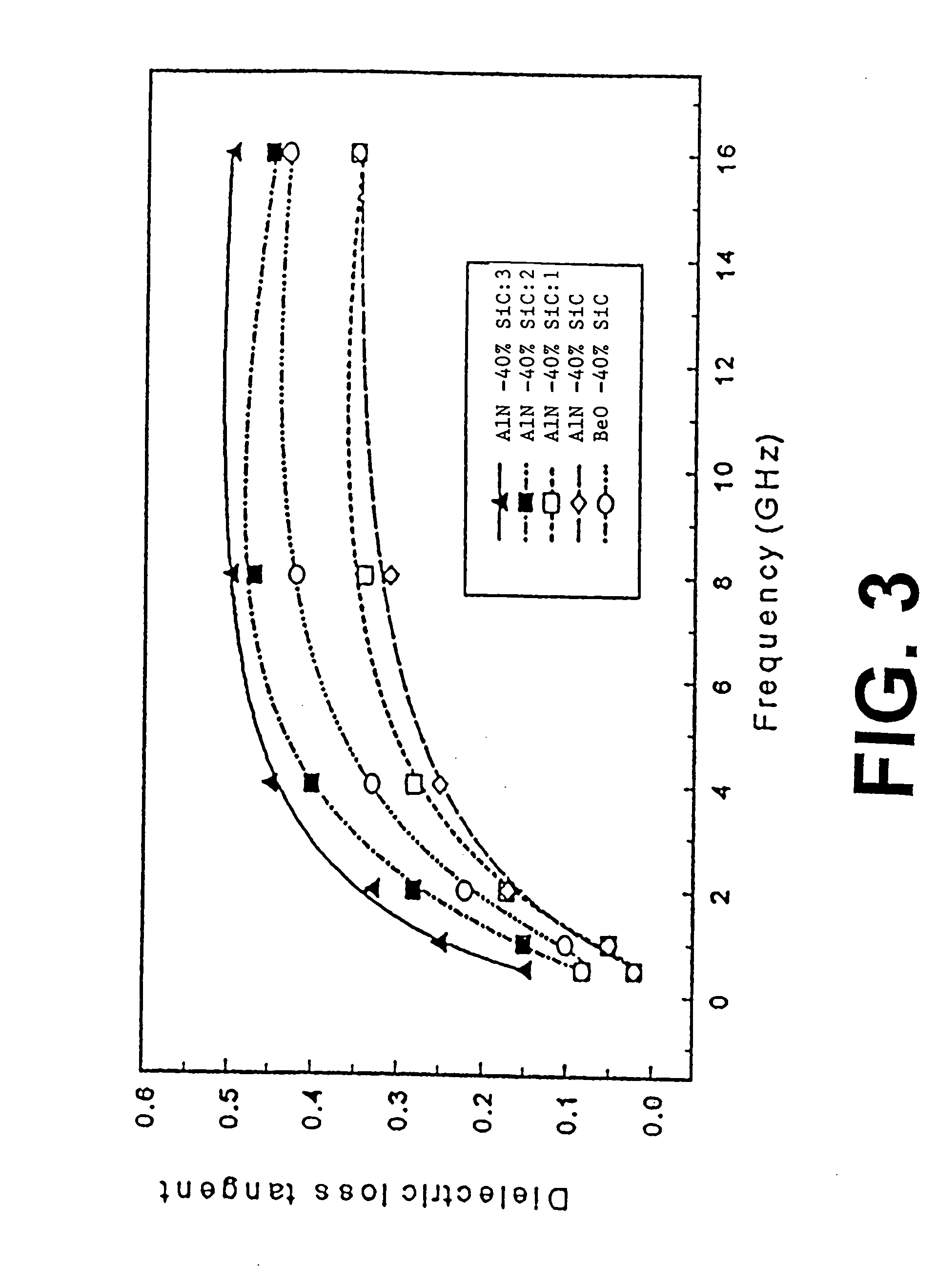High thermal conductivity AIN-SiC composite artificial dielectric material
a dielectric material and composite technology, applied in the field of dense dielectric material composites, can solve the problems of high material thermal conductivity and restricted use of dense composites, and achieve the effect of high thermal conductivity
- Summary
- Abstract
- Description
- Claims
- Application Information
AI Technical Summary
Benefits of technology
Problems solved by technology
Method used
Image
Examples
example 1
[0018] Commercially available AlN (1 m2 / g), SiC (3 m2 / g), Y2O3 (10 m2 / g) and CaCO3 (10 m2 / g) were mixed to yield a ratio of 40% SiC, 0.5% Y2O3, 0.5% CaO and remainder of AlN (% by weight) after firing. The powder was homogenized in one case by dry milling in a ball mill jar with SiC media, and in another using isopropyl alcohol based slurry and a high shear mixer. The isopropyl slurry powder batch was then dried, and the powder was collected and screened. The collected powders was pressed in a 4″×4″ steel die to form a billet. The billets were then assembled into a graphite tooled hot-press die, and placed into a hot press. The billets were heated in the furnace to 1400° C. with only 500 psi pressure applied to the die. 2500 psi pressure was slowly applied to the die between 1400 and 1600° C. The material was then heated to 1950° C. and held at that temperature for 30-90 minutes. Power and pressure were turned off, the furnace cooled and the billets taken from the tooling. The bille...
example 2
[0019] Commercially available AlN (1 m2 / g), SiC (3 m2 / g) and Y2O3 (10 m2 / g) were mixed to yield a ratio of 40% SiC, 3 and 5% Y2O3 and remainder of AlN (% by weight) after firing. The powder was homogenized using isopropyl alcohol based slurry and a high shear mixer, with the addition of alcohol soluble binder. The isopropyl slurry powder batch was then dried, and the powder was collected and screened. The collected powders were pressed in a 4″×4″ steel die to form a billet, followed by a burn-out operation at 350° C. The billets were then assembled into a graphite tooled hot-press die, and placed into a hot press. The billets were heated in the furnace to 1400° C. with only 500 psi pressure applied to the die. 2500 psi pressure was slowly applied to the die between 1400 and 1700° C. The material was then heated to 1850° C. and held at that temperature for 120 minutes. Power and pressure were turned off, the furnace cooled and the billets taken from the tooling. The billet densities ...
example 3
[0020] Commercially available AlN (1 m2 / g), SiC (3 m2 μg), Y2O3 (10 m2 μg) and Li2O (3 m2 / g) were mixed to yield a ratio of 40% SiC, 1% Y2O3, 1% Li2O and remainder of AlN (% by weight) after firing. The powder was homogenized using isopropyl alcohol based slurry and a high shear mixer. The isopropyl slurry powder batch was then dried, and the powder was collected and screened. The collected powders were pressed in a 4″×4″ steel die to form a billet. The billets were then assembled into a graphite tooled hot-press die, and placed into a hot press. The billets were heated in the furnace to 1400° with only 500 psi pressure applied to the die. 2500 psi pressure was slowly applied to the die between 1400 and 1600° C. The material was then heated to 1900° C. and held at that temperature for 30-90 minutes. Power and pressure were turned off, the furnace cooled and the billets taken from the tooling. The billet densities were 99.4% of theoretical, and the thermal conductivity was measured t...
PUM
| Property | Measurement | Unit |
|---|---|---|
| temperatures | aaaaa | aaaaa |
| dielectric constants | aaaaa | aaaaa |
| dielectric constants | aaaaa | aaaaa |
Abstract
Description
Claims
Application Information
 Login to View More
Login to View More - R&D
- Intellectual Property
- Life Sciences
- Materials
- Tech Scout
- Unparalleled Data Quality
- Higher Quality Content
- 60% Fewer Hallucinations
Browse by: Latest US Patents, China's latest patents, Technical Efficacy Thesaurus, Application Domain, Technology Topic, Popular Technical Reports.
© 2025 PatSnap. All rights reserved.Legal|Privacy policy|Modern Slavery Act Transparency Statement|Sitemap|About US| Contact US: help@patsnap.com



